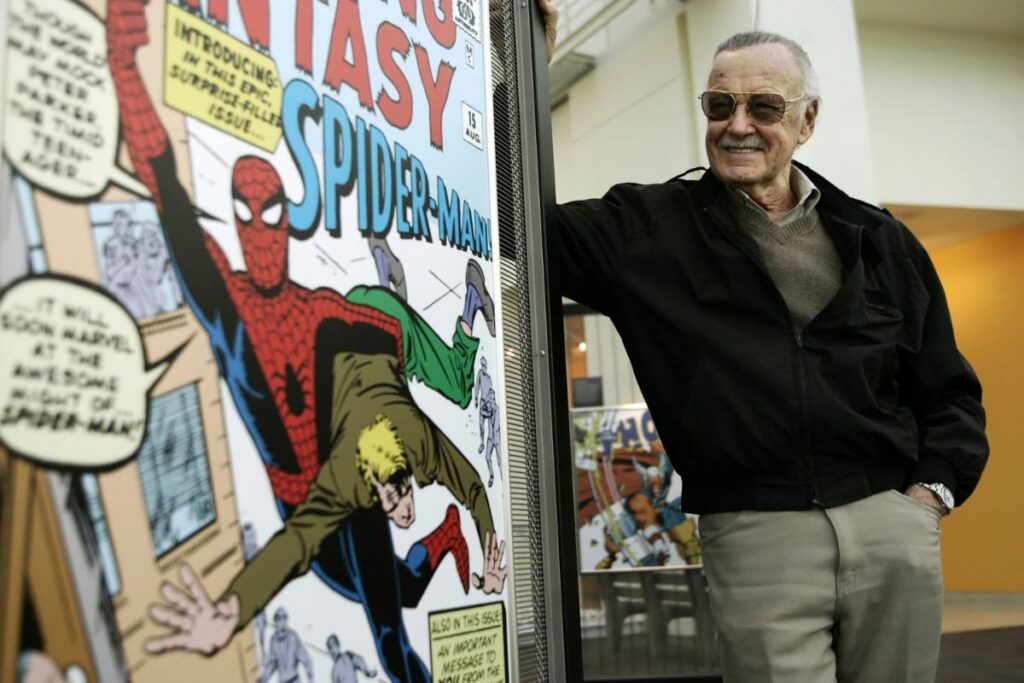The artist’s given name was originally misspelled in this article; we apologize for the error. UPDATED at 12:36 PM on Thursday, September 8
THE STATE OF NEW YORK, ALBANY — Charles Santino, a local comic book writer, editor, and art director, said, “By the time I was thirteen I figured out that I was never going to throw for the Yankees! but maybe I could create comic books.”
Santino has been able to accomplish this for the previous 35 years. First, he worked on “Conan the Barbarian” for Marvel. Right now, he’s working on a Rammur series for Markosia, the largest independent publisher in the UK, based on an idea he came up with.
Local author creates a new comic book anti-hero – Spotlight News :: #comics https://t.co/6UshYOxdIl
— Comics Freak (@comicsfreak) September 7, 2022
Part two of his Corvus Trilogy, “Rampur,” is nearing completion. I anticipate having that ready by the year’s end.
“With ‘Rammur,’ I set out to create a figure who is a master thief in a futuristic police state. I had to build up both the guy and his universe from scratch,” he explained.
To set Rammur’s future planet apart from others, I figured technology would be a key component. He continued, “Rampur is the first anti-hero fueled by renewable energy—hydrogen.” Hydrogen and fusion energy power everything in the future of ‘Rammur,’ and it does so cleanly, effectively, and economically. However, we still live in a global police state.
The first story in each issue is the longest at between 24 and 34 pages, and it is followed by another Rammur narrative and a “Tales of the Police State” (TOPS) short story. TOPS is a separate comic from the Rampur series. These tales show the darker side of life in the comic book world.
Santino’s method includes creating a multilayered universe. His forthcoming contributions to the Rampur universe will focus on character growth and meticulous plotting.
I do everything for Rammur except sketch, color, and type the stories. He went on, “I wrote it, edited it, and designed it. Paulo Peres, the lead artist, is responsible for the majority of the work.
When I compose the stories, I employ a technique known as a “storyboard script.” “I just ‘draw’ the plot with these basic, stick figure layouts,” he said. “This helps me determine if the tale is aesthetically feasible. Almost no writers who aren’t also artists do this.
This fervor sprouted at an early age. At the tender age of nine, Santino was presented with a copy of the DC Comic “Mystery in Space” by his doting father. In the end, he gravitated toward DC’s heroes, with Batman rapidly becoming a favorite.
The year he purchased a Marvel comic with reprints of the original Fantastic Four and Spider-Man stories was “the true turning point,” he added. Within a few years, he had bought up nearly the entire Marvel catalog. As he read more and more historical comics, his enthusiasm grew.
For example, “I was reading Warren’s black-and-white horror mags, underground comics, and back to DC for Deadman, Batman, Swamp Thing,” he continued. Later on, I learned about the Golden Age comics that were produced between the late 1930s and the mid-1950s.
For some reason, one comic book stuck with him. “The Song of Red Sonja,” the final issue of Marvel’s “Conan the Barbarian,” drawn by Barry Smith, “impressed me so strongly that I knew I had to pursue writing comic books,” he reminisced.
When he was younger, the idea that he might one day work for Marvel himself would have been “dismissed” as impossible in his mind. When the 1980s rolled around, however, Santino’s life took a turn for the worst.
After Marvel editor Larry Hama acquired an adventure story I wrote and published it in ‘Savage Tales’ in the ’80s, I went on to pen seven issues of ‘Conan the Barbarian’ and a parody of the Teenage Mutant Ninja Turtles for Marvel’s humor comic, ‘What The-?!
Santino is looking forward to the completion of his next project, ‘Rampur: The Corvus Trilogy, Part II,’ which he has been working on for a while now.
Santino’s favorite part of his profession is the satisfaction he gets from putting in a lot of effort and then witnessing the results of his labors.
He listed as highlights “coming up with an idea for a story and seeing it through to completion” and “remaining enthralled by the story no matter how many times I read it.” feeling content with the printed comic book in its entirety, including the artwork, color, lettering, and layout. Hearing from readers that my work was appreciated.
Someone told me they started reading comics because of a piece I wrote,” he said. To paraphrase, “It doesn’t get much better than that.”

